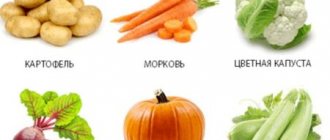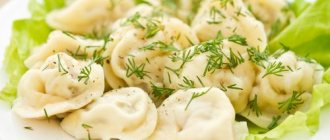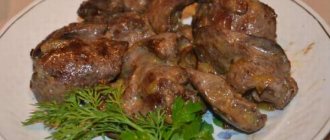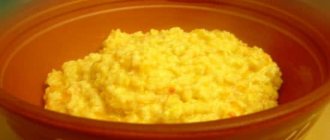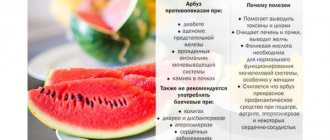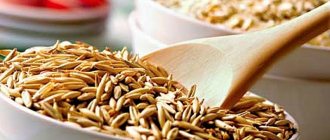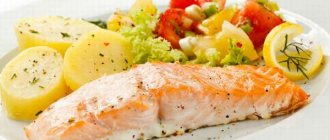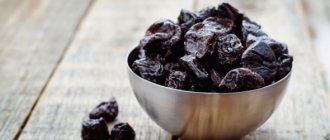Is it possible to eat broccoli for pancreatitis?
Before answering this question, it is necessary to clarify what forms of pancreatitis exist and how they differ. Acute pancreatitis occurs suddenly with severe pain and other unpleasant symptoms. The acute form may occur for the first time or against the background of exacerbation of chronic pancreatitis.
At the time of acute inflammation, the patient should be on a fasting diet for about three days. During this time, you cannot eat any food; you only need to drink still water. Starting from the fourth day, light foods low in fat and fiber are introduced into the patient’s diet. Broccoli is perfect for these purposes. When eating dishes from this variety of cabbage, the pancreas is not overloaded, and the digestive system quickly digests the incoming food.
With chronic pancreatitis, the patient must follow a diet throughout his life. Any relaxation in the form of eating fatty foods or alcoholic drinks can cause an exacerbation. You can diversify your diet with broccoli. You can use it to make soups - purees, casseroles, side dishes and much more. During the period of remission, cabbage can be baked with a small amount of sunflower oil.
Features of the diet for cholecystitis and pancreatitis
Proper nutrition for pancreatitis and cholecystitis should be done not only by selecting the necessary products, but also by following the cooking rules.
The diet requires frequent meals, but in very small portions. That is, a person should eat 5-6 times a day, but not overeat. Only in this way can you get all the necessary calories in a day and not load the pancreas, ducts and body of the gallbladder.
The diet for cholecystitis and pancreatitis must adhere to certain rules for preparing dishes. Table No. 5 does not allow food to be fried, smoked, dried, salted, pickled or pickled. Products must be steamed or boiled.
Also, if you have cholecystopancreatitis, you should not eat solid food without first grinding it. It will be much easier for the stomach to cope with small pieces than with large ones, while the pancreas and gallbladder will not be overly stressed.
Recommended broccoli recipes for pancreatitis
With stable remission, it is allowed to diversify the diet with various broccoli dishes.
- Broccoli soup. To prepare the dish you will need raw or frozen cabbage, potatoes, cream, cheese. Place vegetables in boiling, lightly salted water and reduce heat. After 20 minutes, remove the vegetables and beat with a blender. The resulting mass is sent back to the pan, cream and grated cheese are added to it. During an acute exacerbation, cheese and cream are removed from the recipe.
- Casserole. To ensure that the finished dish is soft and pleasant to the taste, the cabbage must first be boiled for five minutes. For cooking you need eggs, milk, cheese and naturally broccoli. Beat the eggs with milk and put them aside for now. Place boiled cabbage in a baking dish. Next, sliced cheese is added to it and the whole thing is filled with the egg mixture. The casserole is baked at 180 degrees for 25 minutes.
- Steamed broccoli. This is perhaps the easiest way to prepare cabbage. You can prepare a dietary dish using a double boiler or a regular pan. During steam treatment, the product retains the maximum amount of nutrients.
During the chronic form of pancreatitis, do not forget that frying the inflorescences in oil is undesirable, as this can provoke another exacerbation.
Beneficial properties of the product for inflammation of the pancreas
Broccoli is an essential food product for patients with pancreatitis. It contains a lot of vitamins and minerals that are so necessary for the diseased organ. Due to the small amount of fiber, cabbage is easily digestible and helps the intestines cope with constipation. The product has a beneficial effect on the entire body as a whole:
- Removes toxins;
- Normalizes the acidity of gastric juice;
- Has an antitumor effect;
- Normalizes the functioning of the gastrointestinal tract;
- Supplies natural calcium to the body;
- Does not allow cholesterol to accumulate;
- Increases immunity;
- With the help of chlorophyll, pancreatic gland cells are strengthened, they become more resistant to aggressive enzymes.
However, due to individual intolerance, broccoli has a negative effect on the body of some people. If, when consuming this type of cabbage, a person notices bloating, belching, or diarrhea, it is worth holding off on introducing this product into the diet.
The daily intake of any dish prepared from broccoli is no more than two hundred grams. In case of acute pancreatitis, you need to slightly reduce the amount of cabbage consumed in the first days after an exacerbation.
Broccoli dishes for pancreatitis not only provide variety in the patient’s diet menu, but also supply the body with numerous vitamins and minerals. In order for the product to retain all its beneficial properties, it does not need to be subjected to heat treatment for a long time; it is enough to cook it for about 15 minutes and the product is ready for use. Not only mature inflorescences, but also young cabbage sprouts are suitable for consumption during inflammation of the pancreas.
Related Posts
Cauliflower is a vegetable with excellent taste. It is used in dishes in the most unexpected ways: it is pickled, fried in batter, boiled, added to meat or in first courses, and, of course, eaten fresh.
Dishes made from this variety of cabbage cannot be classified as dietary food, but in order to consume it, patients with pancreatitis only need to know some of the nuances of culinary processing.
Broccoli for gallbladder inflammation
Inflammation of the pancreas is sometimes secondary to an exacerbation of problems with the gallbladder. Outside of exacerbation, this vegetable can be added to the diet for cholecystitis. Cabbage helps lower cholesterol levels and reduces the tendency to form stones. It contains antimicrobial and anti-inflammatory substances. In addition, with cholecystitis, broccoli will help get rid of intoxication. Harmful molecules are neutralized and leave the body through the intestines.
Cauliflower for acute and chronic stages of pancreatitis
Cauliflower can be consumed for chronic and acute pancreatitis, thanks to:
- Low calorie
- Delicate structure
- Low fiber content compared to other types of cabbage.
Already after two weeks from the attack of the disease, cabbage can be included in the diet of patients in the form of puree from boiled inflorescences or as one of the components of vegetable soups. However, everyone does not need to eat cauliflower, because it can moderately increase gastric secretion, which is not always acceptable.
Cauliflower for remission of pancreatitis
Cauliflower can become an indispensable product for patients in remission. A small amount of fiber facilitates digestion, activates intestinal function and eliminates constipation.
In addition, the product provides the body with minerals, vitamins, antioxidants and vegetable protein. Cabbage, in particular, is high in vitamin C and B vitamins. Cauliflower is an excellent supplier of vitamin U, which:
- Detoxifies toxins
- Synthesizes many useful substances
- Participates in the neutralization of toxins
- Normalizes the acidity of gastric juice.
The antitumor effect of this type of cabbage and its ability to prevent the concentration of cholesterol in the blood are well known.
Dishes made from cauliflower add variety to the menu, providing an opportunity for aesthetically pleasing dishes. People with chronic pancreatitis can eat boiled cabbage inflorescences, bake in the microwave or oven, add to soups, stew with other vegetables or separately.
To make cabbage tastier, it can be cooked in a protein-milk sauce. For diseases of the pancreas, cabbage fried in batter, pickled and fresh is contraindicated, after which you will have to know exactly how to restore the pancreas.
Fresh cabbage or frozen inflorescences are suitable for preparing dishes. To purchase fresh vegetables, you need to select light yellow or white heads of cabbage without dark spots. If there are such defects, this indicates that the cabbage was stored incorrectly for a long time, and most of the vitamins were lost.
Before adding to the dish, the head of cabbage is divided into inflorescences and thrown into boiling water. If a dish requires pure white cabbage, add a little sugar to the water.
To preserve maximum nutrients, cabbage should not be overcooked. 15 minutes is enough for the vegetable to cook. Thus, cooked cabbage can be added to dishes or baked separately and eaten with great pleasure.
Can patients with pancreatitis eat broccoli?
This question often worries patients and their relatives, because broccoli is a storehouse of medicinal properties. It contains a huge amount of vitamins and minerals.
In addition, it contains vitamin B, which allows you to enhance the effect of all the components of this product.
Broccoli and pancreatitis are interconnected, because to improve the functioning of the gland, you simply must include this product in your diet.
The vegetable contains soft fiber. Thus, broccoli is quite useful for pancreatitis, because it has a low calorie level and, as a result, does not overload the pancreas. Calorie content is only 27 Kcal per 100 grams. Broccoli allows you to most effectively adhere to the diet that the patient needs.
To the question “is it possible to eat broccoli for pancreatitis?” it's safe to say yes. Gastroenterologists allow broccoli to be eaten, but only stewed or boiled.
Broccoli in the acute phase of pancreatitis
Broccoli is a great food because:
- There is high-quality plant protein, which is twice as much as regular cauliflower. This element is necessary for the restoration process of the pancreas
- Chlorophyll strengthens cell membranes, making them more resistant to the negative effects of pancreatic enzymes.
However, in some patients the product causes bloating, colic, and sometimes diarrhea. These effects can be explained by the presence of fiber in an amount of 2.6 g per 100 g.
It is better to introduce cauliflower not at the beginning of a therapeutic diet, after eating other similar vegetables (potatoes or pumpkin), and subject to normal individual tolerance. Stews, casseroles, steamed puddings, soups and purees are prepared from pureed and boiled broccoli.
If a person experiences the above unpleasant symptoms, then it is better to delay the appearance of broccoli on the menu, postponing it until the stage of nutritional rehabilitation. There is another contraindication to broccoli - individual intolerance, in which case broccoli is contraindicated for patients.
Broccoli and the remission phase
If there is a stable remission, it is possible to diversify the preparation of broccoli, expanding the number of dishes from the product. It is allowed to stew, bake the vegetable, cook it as a side dish or casserole, and add it to salads. Speaking of casseroles, if you wish, you can also study the recipe for cottage cheese casserole for pancreatitis, this is a very high-quality dish for the pancreas.
Systematic consumption of broccoli will provide an opportunity to collect its many beneficial properties in the body. This vegetable:
- Low calorie
- An excellent plant-based supplier of dietary calcium (100 grams of product contains 47 mg of the substance)
- Prevents excessive cholesterol concentrations with the help of lipolytic elements - methionine and choline
- Improves immunity and hematopoiesis
- Eliminates toxins and waste thanks to soluble fiber
- Protects against the formation of malignant cells, this is facilitated by anetol trithione, synergin, sulforaphane and indole-3-carbitol and other substances
- Prevents depression due to serotonin present in the composition
- Has antioxidant activity.
In addition, after consuming one hundred grams of broccoli, a person receives 99.1% of the daily amount of ascorbic acid and about 85% of vitamin K.
For chronic pancreatitis, the maximum serving of broccoli per day is:
- In the acute phase - 200 g of product (if tolerated)
- In the phase of stable remission - 200 g of product.
In case of acute pancreatitis, in conditions of individual tolerance, 200 g of the product is allowed.
You can eat broccoli for pancreatitis in the chronic form of the disease, as well as from 4 days after the onset of exacerbation of the disease. This dietary natural product contains a small amount of calories, it is low in fat and high in fiber, which makes it healing for inflammation of the pancreas.
Broccoli is low in fat and high in fiber, which makes it beneficial for inflammation of the pancreas.
Eating vegetables during remission
A stable period of remission makes it possible to diversify the culinary processing of cabbage and expand the list of prepared dishes. Cabbage can be stewed, eaten raw, baked, made into salads, closed and open pies.
With constant use of broccoli, you can obtain numerous medicinal properties, as it:
- Does not have high calorie content,
- It is considered an excellent plant-based supplier of natural calcium, which is so necessary for teeth and bones,
- Stops the accumulation of cholesterol (thanks to lipolytic components - methionine and choline),
- Normalizes hematopoiesis and immune forces (the influence of chlorophyll),
- Frees you from toxic substances and waste (thanks to soluble fiber),
- Protects against cancer (due to anetol trithione, synergin, sulforaphene and indole 3-carbitol),
- Stops depressive states (action of serotonin),
- Has antioxidant activity.
In addition, by consuming 100 g of broccoli, patients receive 99% of the daily requirement of ascorbic acid and 85% of the required vitamin K.
Composition and beneficial qualities of vegetables
Broccoli contains a large amount of substances useful for the human body: vitamins, microelements, fiber, water. This cabbage contains vitamins C, E, A, K, PP and group B, potassium, sodium, magnesium, manganese, selenium, zinc, calcium. The amount of vitamin C in broccoli is greater than in citrus fruits.
The beneficial properties of this vegetable include the following:
- cleansing the intestines with a large amount of fiber;
- normalization of digestive processes;
- stimulation of bile secretion;
- strengthening the retina of the eyes.
In addition, the benefits of broccoli in the fight against cancer have been noted: the substance sulforaphane contained in the young stems of the vegetable prevents the development of cancer cells.
Broccoli also helps normalize blood sugar.
Features of use
The permissibility of consuming broccoli depends on the stage of the disease.
You should consult a specialist before introducing this product into your diet.
In acute form
Broccoli should be included in the menu for acute pancreatitis after pumpkin and potatoes. It is recommended to consume the vegetable in the form of pureed soups or pureed without salt. This product must be boiled until soft and pureed using a blender or fork. Eating broccoli daily is not recommended.
You should immediately stop eating this vegetable if the patient experiences colic, increased gas formation, or bloating.
You should immediately stop eating this vegetable if the patient experiences colic.
In the chronic stage
For chronic pancreatitis, this healthy product can be consumed either boiled or steamed, stewed, baked in the oven, in the form of pureed soups, casseroles, and soufflés. It is recommended to combine this vegetable with other permitted products. You are allowed to add a pinch of salt to your dishes.
During exacerbation of the disease
It is necessary to boil broccoli in boiling unsalted water. In addition, it is important to begin introducing this product into the diet with small portions, carefully monitoring the patient’s reaction. If flatulence and colic occur, you should stop eating broccoli.
Cholecystopancreatitis
Patients with pancreatitis and cholecystitis are recommended to eat boiled, baked, stewed or steamed broccoli.
You should avoid salt in the finished product. In addition, this product should not be eaten too cold or hot: the temperature of the prepared dishes should be +35…+ 40ºС.
Is it possible to eat cauliflower and broccoli for pancreatitis?
Puree soup with broccoli and potatoes. Homemade recipes.
Features of consumption
The question of whether broccoli can be eaten for pancreatitis concerns many patients who are faced with this pathology, since the vegetable is a source of a storehouse of healing properties. Cabbage contains a sufficient amount of minerals and vitamins. In addition, broccoli is endowed with B vitamins, which enhance the effects of all components of this vegetable.
- Magnesium.
- Calcium.
- Selenium.
- Zinc.
- Sodium.
- Manganese.
- Vitamins – C, E, A, K, PP, B.
The product has a direct connection with pancreatitis. Therefore, for anyone with pancreatitis who is interested in whether there will be any benefit from taking broccoli, the answer is unequivocal - yes. If you have pancreatitis, you should definitely include this vegetable in your diet.
The vegetable contains soft fiber, which indicates the usefulness of the vegetable in the presence of pancreatitis. In addition, broccoli has a low calorie content, which allows you not to overload the diseased organ. The calorie content of the product is 27 Kcal per 100 grams of cabbage. Thanks to the intake of broccoli, you can maximally follow the dietary nutrition that the patient needs.
eating broccoli for pancreatitis
You can eat broccoli for pancreatitis only boiled or stewed.
Of the beneficial properties of broccoli, note:
- cleansing the intestines due to the large amount of fiber;
- improvement of digestive processes;
- assistance in the secretion of bile;
- strengthening the retina;
- removal of toxins;
- normalization of the acidity of gastric secretions;
- supply of natural calcium to the body;
- increasing immunity;
- the vegetable prevents cholesterol from accumulating in the body;
- Due to chlorophyll, the cells of the pancreas are strengthened, they become much more resistant to the influence of aggressive enzymes.
The benefits of this vegetable can be endlessly listed. Broccoli is considered one of the healthiest foods in the world. Every 100 grams of product saturates the body with the daily requirement of vitamins K and C.
In addition, the usefulness of the product is noted in the fight against cancer pathologies. The substance sulforaphane, which is found in young cabbage stems, does not allow cancer cells to develop. Cabbage also helps normalize glucose in the circulatory system.
Due to individual intolerance, cabbage can have a negative effect on the body. If after eating broccoli you experience bloating, belching and diarrhea, you should not include this product in your diet.
bloating
Before including broccoli on the menu, you should first consult with your doctor about your current illness. And, unfortunately, if the patient has an acute stage of pancreatitis, then it is recommended to eat broccoli after introducing potatoes and pumpkin into the diet. For the dietary table, they eat cabbage, preparing a puree soup from it, or grinding the vegetable without adding salt.
The product is boiled until soft and pureed using a blender and fork. There is no need to include a vegetable in your diet every day. If, after taking it, a patient with pancreatitis has increased gas formation, a swollen stomach and colic, then taking cabbage should be postponed.
Cauliflower for pancreatitis is included in the diet, since cabbage has low calorie content, low fiber content, is easily digestible, and can be eaten in the 3rd week after the initial outbreaks of the acute phenomenon. Cooking cauliflower for pancreatitis.
- Puree soups.
- Boiled, stewed stew.
- For a couple.
They begin to introduce cabbage into the diet in small doses, up to 100 grams per day. To prevent increased secretion of gastric juice and a new attack, cauliflower is not consumed daily.
During the remission stage and with chronic pancreatitis, it is allowed to boil the product, stew it, cook it in a double boiler, bake it, adding a little salt to the dish. To prevent irritation of the mucous membrane, in case of pancreatitis, it is recommended to combine broccoli with other acceptable products.
During remission, cauliflower is consumed with an increase in the daily dose to 200 grams.
In case of exacerbation of pancreatitis, it is necessary to boil broccoli in unsalted boiling water. Broccoli should be included in the menu in small doses, monitoring the body’s reaction. If flatulence or colic develops, the intake of the vegetable is postponed.
boiled broccoli
How to cook broccoli for pancreatitis
It is necessary to properly prepare broccoli for inflammation of the pancreas so as not to harm the patient’s body. It is important to follow all the recommendations of your doctor and choose those methods of preparing this vegetable that are allowed for your stage of the disease.
Cream soup
A popular recipe for broccoli dishes for patients with pancreatitis is a healthy puree soup. To prepare a light soup from this vegetable, you will need 4-5 medium-sized inflorescences, 2 cups of boiled water and 1 medium-sized potato tuber. If the patient suffers from chronic pancreatitis or is in a state of stable remission, it is permissible to add 30-40 g of hard low-fat cheese, a pinch of salt, 1 tbsp. l. low-fat cream.
A popular recipe for broccoli dishes for patients with pancreatitis is a healthy puree soup.
To prepare the soup, you need to bring water to a boil, then add pre-peeled and chopped vegetables to it. Boil them for 15 minutes over low heat, then puree them using a blender. In case of chronic pancreatitis, it is allowed to add finely grated cheese, cream and a pinch of salt to the already prepared soup.
Puree
To make broccoli puree you will need several florets. They must be boiled in boiling water for 15 minutes over low heat. After this, you should thoroughly mash them to a puree. You can add a little water to get a thinner consistency. For chronic pancreatitis, it is permissible to add 20-30 ml of skim milk and salt the dish. Before use, the puree should be cooled to a temperature of +40ºС.
Broccoli must be boiled in boiling water for 15 minutes over low heat.
Casserole
This dish is suitable for both patients suffering from chronic pancreatitis and those in remission. To prepare it you will need the following ingredients:
- 250 g broccoli;
- 50 g carrots;
- 4 chicken eggs;
- 2 tbsp. l. low-fat milk;
- 1 tbsp. l. fat sour cream;
- 5 g unsalted butter;
- 30 g small white bread crumbs;
- 20-30 g of hard cheese with low fat content.
Boil the broccoli for 15 minutes and then chop it. Peel the carrots boiled until tender and grate them on a fine grater. Eggs must be divided into whites and yolks. Mix the yolks with sour cream, then add to the vegetables. The whites should be whipped with milk until they form a solid mixture. Carefully add it to the rest of the ingredients. Grease a baking sheet with oil, then place the mixture into it. You can also sprinkle the dish with grated cheese, add crackers and bake in the oven at 180ºC for 10-15 minutes.
Before serving, the dish must be cooled to the recommended temperature.
Diet for chronic manifestations of pancreatitis and cholecystitis
Eating with chronic pancreatitis and cholecystitis must be done extremely carefully so as not to cause another attack. Nutrition for chronic cholecystitis and pancreatitis should include only healthy foods.
It is important to understand that with chronic cholecystitis and inflammation of the pancreas, the body is unhealthy, that is, another relapse may occur at any appropriate moment. The chronic course of ailments is less symptomatic, but this does not mean that the digestive system is healthy, it is simply in the stage of a “planted bomb”, which can detonate at any moment.
Diet 5 for pancreatitis and cholecystitis should be applied immediately after the diseases have been diagnosed. It is better to discuss all possible nuances regarding taking the products with your doctor. This is due to the fact that in many patients with pancreatitis, the function of producing the hormone insulin is impaired, and such patients need to protect themselves from sweets as much as possible.
Cholecystitis and pancreatitis have different individual characteristics; the rarest cases are possible, so only a full examination and consultation with a doctor will help you put together an approximate menu.
What not to eat for cholecystitis and pancreatitis
When drawing up a menu for the week for cholecystitis and inflammatory processes of the pancreas, you need to know which products should not end up on table No. 5.
The main rule that table 5 uses is no animal fats, high-calorie foods, spices, sour, salty or spicy ingredients.
Products prohibited for consumption on the table 5:
- Fatty fish and meats. Pork, lamb, goose, duck, salmon, catfish, herring, mackerel are considered foods with a high percentage of fat; they put a lot of stress on the digestive organs and often cause inflammatory processes in diseased organs.
- Fatty dairy products. Experts do not recommend taking very fatty cheese, cottage cheese, sour cream and cream for gastritis, pancreatitis and inflammation of the gallbladder.
- Coarse cereals. Wheat, corn, millet porridges are prohibited for digestive problems and enzyme disorders.
- Raw vegetables. Cabbage, cucumber, tomato, beets, carrots, onions, and garlic should not be taken raw; they contain many aggressive ingredients that irritate the esophagus and place a heavy burden on the digestive organs.
- Fruits and berries. Apples, pears, plums, apricots, raspberries, strawberries, and gooseberries contain acid and a lot of fiber. Such products will do more harm than good.
- Fresh pastries and sweets. Fresh baked goods contain a lot of starch, which requires more enzymes and bile to process. Prohibited sweets: cakes, pastries, sweets, ice cream, chocolate.
- Beverages. Carbonated and sweet drinks are contraindicated for patients with digestive tract diseases. Is it possible to drink coffee if you have inflammation of the pancreas? Coffee, green tea, cappuccino, and hot chocolate put a lot of stress on the pancreas.
These foods should not be eaten during manifestations of pancreatitis and cholecystitis, otherwise the patient’s condition will worsen and may lead to hospitalization.
What can you eat for pancreatitis and cholecystitis?
Food for these diseases should be as healthy as possible using dietary ingredients. You need to eat according to the menu every day; only a systematic approach and dietary meals will help prolong the remission stage and establish a normal lifestyle for a person.
What to eat:
- Low-fat dairy products . Is it possible to drink kefir? Cheese, cottage cheese, yogurt, kefir are allowed for pancreatitis, eaten in small doses. The main thing is to pay attention to the expiration dates of products and production technology. For example, cheese should be made only using standard technologies, without adding chemicals to soften it, so it is better to take cream cheese with a fat content of no more than 45–50%. Smoked cheese or with nuts will be contraindicated and will only bring discomfort and stomach problems.
- For pancreatitis, it is better to rub cottage cheese through a sieve or beat it with a blender so that the particles are very small. You can also eat milk porridge with pasta or rice. Milk for pancreatitis should be well heat treated;
- Porridge . Porridge occupies an important place for pancreatitis; the main thing is to choose the right cereals, rice, buckwheat, and oatmeal are allowed. Corn is also allowed in small quantities, but it is used in very small portions;
- Soups. A diet for chronic pancreatitis and cholecystitis involves preparing soups in a second broth without frying. The rules for preparing soups also exclude the addition of spices. Soups are eaten only warm; you cannot eat cold or very hot soups. Green peas are actively used for preparing dietary soups;
- Fruits. What fruits can you eat? These are apples, pears, cherry plums, but they must undergo heat treatment, that is, they must be baked or boiled and rubbed through a sieve. You can eat a little melon or peach;
- Beverages. They drink mainly decoctions of dried fruits, rose hips or light, non-acidic compotes. You can drink some warm, weak tea, but you should pay attention to the body’s reaction.
The final question of what you can eat for pancreatitis and cholecystitis cannot be answered unequivocally. Each person is individual with their own food preferences. There are different diets that are used for these ailments, but the fifth table is considered one of the most thoughtful and correct diets.
Recipes for pancreatitis and cholecystitis should contain only approved products and should only be steamed or boiled. This food may not be the most delicious and familiar, but it takes time and patience. An improperly prepared dish, even from the above products, can only harm the patient’s damaged digestive system.
